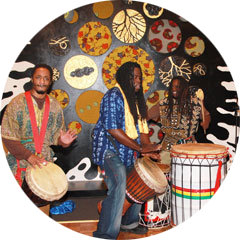 Visitors will find figures from personal or household shrines, such because the Byeri guardian figure, complemented by those used in group shrines and spaces, similar to Mami Wata and the Ethiopian Processional Cross. Mashamboy and different masks—manufactured from raffia and decorated with shells, beads, and even bells and feathers—have been traditionally used to dramatize the founding of the royal dynasty and its matrilineal system of descent. The Baoulé , the Senoufo and the Dan peoples are skilled at carving wood and each culture produces picket masks in wide selection.
Visitors will find figures from personal or household shrines, such because the Byeri guardian figure, complemented by those used in group shrines and spaces, similar to Mami Wata and the Ethiopian Processional Cross. Mashamboy and different masks—manufactured from raffia and decorated with shells, beads, and even bells and feathers—have been traditionally used to dramatize the founding of the royal dynasty and its matrilineal system of descent. The Baoulé , the Senoufo and the Dan peoples are skilled at carving wood and each culture produces picket masks in wide selection.
As a substitute, these objects became part of pure history museums—together with fossilized remains, flora and fauna, and purely utilitarian objects. The collection’s focus is on masks and figures from West and Central Africa, principally carved in wooden. Its masks, that are thought-about to be enormously highly effective, are formed in an elongated animal form embellished with precise horns of antelope, quills of porcupine, hen skulls, and different objects.
But now they are housed in locations just like the Metropolitan Museum of Art. Their purpose was to offer bursaries for artists who wished to study formally or attend art workshops and residencies. Gilbert G. Groud criticizes the traditional beliefs in black magic , as held with the non secular masks mentioned above, in his illustrated e book Magie Noire.
Pair of Yoruba twin figures (ibeji), wooden, from Efon Alaye, Nigeria. Each sorts of masks are involved with initiation and also perform at funerals, where they help encourage the soul of the deceased to move on to the ancestral realm. These ceremonial masks are each thought to have a soul, or life force, and wearing these masks is thought to transform the wearer into the entity the mask represents.
The turned-up nose is a attribute of Yaka figures and masks. African masks often characterize a spirit and it’s strongly believed that the spirit of the ancestors possesses the wearer. The Yale College Art Gallery’s collection of artwork from Africa south of the Sahara started with gifts of a number of textiles in 1937 and now consists of some 2,000 objects in wooden, steel, ivory, ceramic, and different supplies.
